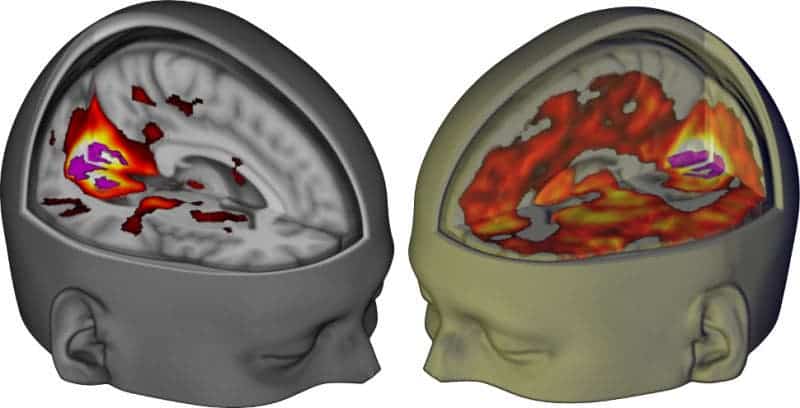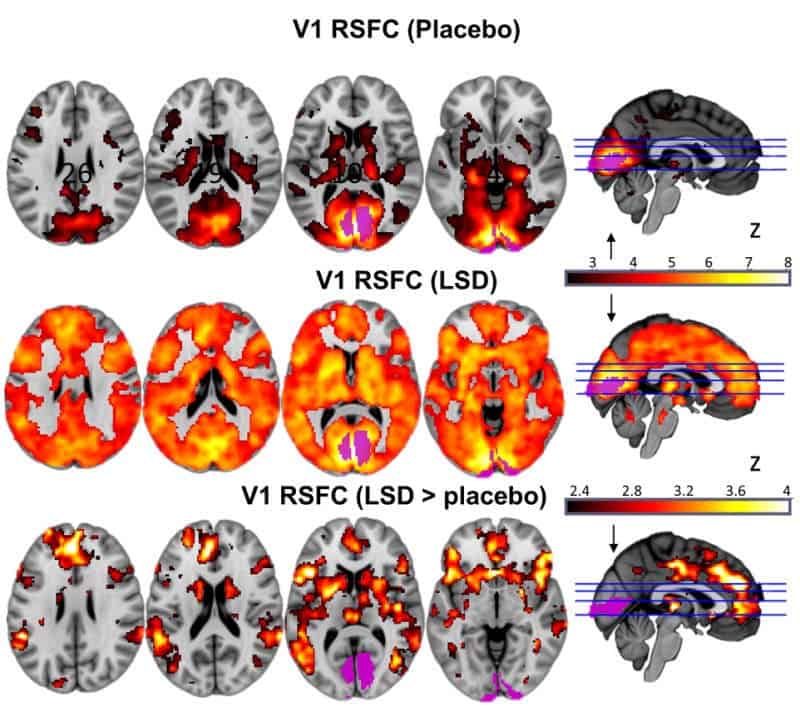It took a while, but scientists have finally imaged the brains of people on LSD — a psychedelic used recreationally by millions, but whose therapeutic potential is only recently beginning to be recognized. Judging from the scans, it seems like Lysergic acid diethylamide (LSD) “completes the brain”. Essentially, the brain functions less like a compartmentalized entity and more like a whole, very much akin to how the brain of a baby works.

In the adult brain, each function is specialized and corresponds to a particular area of the brain. The visual cortex controls vision, the auditory cortex processes hearing, the motor cortex is for movement and so on. Well, it seems that when high on LSD this division of labor breaks down, giving rise to a more unified system. This is what the so-called “dissolution of the ego” might look like.
A particular network in the brain responsible for self-awareness, the parahippocampus and retrosplenial cortex, experience declined connectivity on LSD. This is what the so-called “dissolution of the ego” might look like — the disintegration of the self while still being aware.
“In many ways, the brain in the LSD state resembles the state our brains were in when we were infants: free and unconstrained,” said Robin Cahart-Harris, who led the study. “This also makes sense when we consider the hyper-emotional and imaginative nature of an infant’s mind.”
For instance, scientists found that many brain areas, not just the visual cortex, contributed to processing sight. This might explain the intense and vivid hallucinations LSD users report.
The researchers from the Imperial College London say that this brain unification might also have something to do with the long-lasting “wellbeing” effects users experience post-LSD trip. It’s only recently that researchers have been allowed to work with LSD after it was criminalized all over the world in the 1970s. Evidence suggests that classical psychedelics like psilocybin and LSD could be a way to soothe anxiety in the terminally ill, treat alcoholism and more.

“For the first time, we can really see what’s happening in the brain during the psychedelic state, and can better understand why LSD (Lysergic acid diethylamide) had such a profound impact on self-awareness,” said David Nutt, a professor of neuropsychopharmacology who worked with Carhart-Harris.
“This could have great implications for psychiatry.”
The study published in PNAS was carried out on 20 healthy volunteers who received either a 75 micrograms dose of LSD or a placebo. They had their brains scanned using functional magnetic resonance imaging (fMRI) and magnetoencephalography (MEG).
“This, for human neuroscience, is the same as the Higgs boson,” Nutt says.
“This is a milestone study,” says Matthias Liechti, a drug researcher at the University of Basel, Switzerland. “It seems that research on LSD is making progress again despite regulatory and funding hurdles.”
The floodgates of psychedelic research are starting to open, and who knows what we might learn. Considering many psychedelics are used by millions each year, despite they’re illegal almost all over the world, the benefits of understanding their effects on the human body cannot be overstated.
“Consciousness research is a relatively young science,” Carhart-Harris told Gizmodo. “In terms of psychedelic research, brain imaging of psychedelics is still pretty embryonic. So in order for us to really understand these findings, we need to slot it in a network of understanding, and we don’t really have that network yet. We’ve got a treasure trove of data, and we’ve got the beginnings of an understanding of what all this means, but we’re still really only scratching the surface.”






